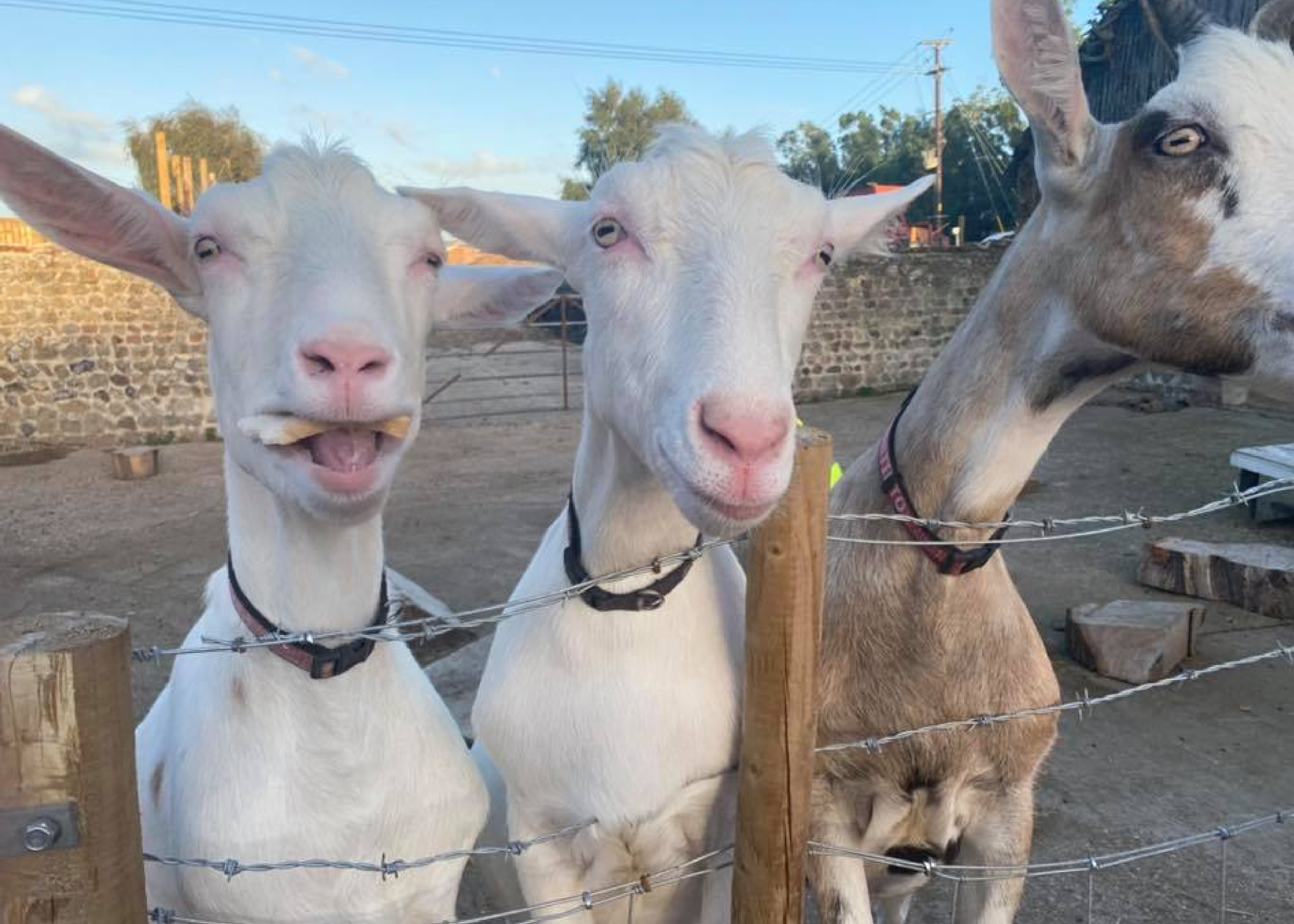British Saanen Goats
The Saanen, German: 'Saanenziege', French: 'Chèvre de Gessenay', is a Swiss breed of domestic goat. It takes its name from the Saanental in the Bernese Oberland, in the southern part of the Canton of Bern, in western Switzerland. It is a highly productive dairy goat and is distributed in more than eighty countries worldwide.
Wessex Saddleback Pigs
The Wessex Saddleback or Wessex Pig is a breed of domestic pig originating in the West Country of England, (Wessex), especially in Wiltshire and the New Forest area of Hampshire. It is black, with white forequarters. In Britain it was amalgamated with the Essex pig to form the British Saddleback, and it is extinct as a separate breed in Britain. However, the Wessex Saddleback survives in Australia and New Zealand.
Our Saddlebacks have 2 litters of piglets each year and are the friendliest pigs you will ever come across, just stay away from their mouths as when they get flustered, they may give you a little nip!
Japanese quail
The Japanese quail, Coturnix japonica, is a species of Old World quail found in East Asia. First considered a subspecies of the common quail, it was distinguished as its own species in 1983. The Japanese quail has played an active role in the lives of humanity since the 12th century. Our quail were hatched and reared by us using shop bought eggs, a common occurrence as it is almost impossible to differentiate between male and female!
Mini Pigs
The name “miniature pig” is used to refer to small breeds of domestic pig, such as Vietnamese Pot-Bellied pigs, Göttingen minipigs, Juliana pigs, Choctaw hogs or Kunekunes (and specimens derived by crossbreeding with these breeds). Notable features of most miniature pigs distinguishing them from other pigs may be defined by their possession of small, perked-back ears, a pot belly, a swayed back, a chubby figure, a rounded head, a short snout, short legs, a short neck and a short tail with thick hair at the end.[1] Typically, most breeds of miniature pigs will range from the minimum weight of 50 pounds (23 kg) to 200 pounds (91 kg). Our mini pigs are all hand reared in Wales before coming to us here and love belly rubs and feet, so watch those shoes!
Brahma Chickens
There has been controversy and confusion over the origin of the Brahma. It appears to have developed in the United States from large birds, with heavily feathered legs, imported in the 1840s from the Chinese port of Shanghai, and thus known as "Shanghai" birds. The distinctive head shape and pea comb of the Brahma probably result from cross-breeding with Grey Chittagong birds of Malay type, imported from Chittagong in eastern Bengal (now Bangladesh); these characteristics distinguish the Brahma from the Cochin, which also derives from "Shanghai" birds.
Aylesbury Ducks
The Aylesbury duck is a breed of domesticated duck, bred mainly for its meat and appearance. It is a large duck with pure white plumage, a pink bill, orange legs and feet, an unusually large keel, and a horizontal stance with its body parallel to the ground. The precise origins of the breed are unclear, but raising white ducks became popular in Aylesbury, Buckinghamshire, England, in the 18th century owing to the demand for white feathers as a filler for quilts. Over the 19th century selective breeding for size, shape and colour led to the Aylesbury duck.
Chickens
The chicken (Gallus gallus domesticus) is a type of domesticated fowl, a subspecies of the red junglefowl (Gallus gallus). Chickens are one of the most common and widespread domestic animals, with a total population of 23.7 billion as of 2018. Up from more than 19 billion in 2011. There are more chickens in the world than any other bird or domesticated fowl. Humans keep chickens primarily as a source of food (consuming both their meat and eggs) and, less commonly, as pets. Originally raised for cockfighting or for special ceremonies, chickens were not kept for food until the Hellenistic period (4th–2nd centuries BC). If you look inside the sheds, you’ll find their eggs, grab some to take home, they are delicious!







